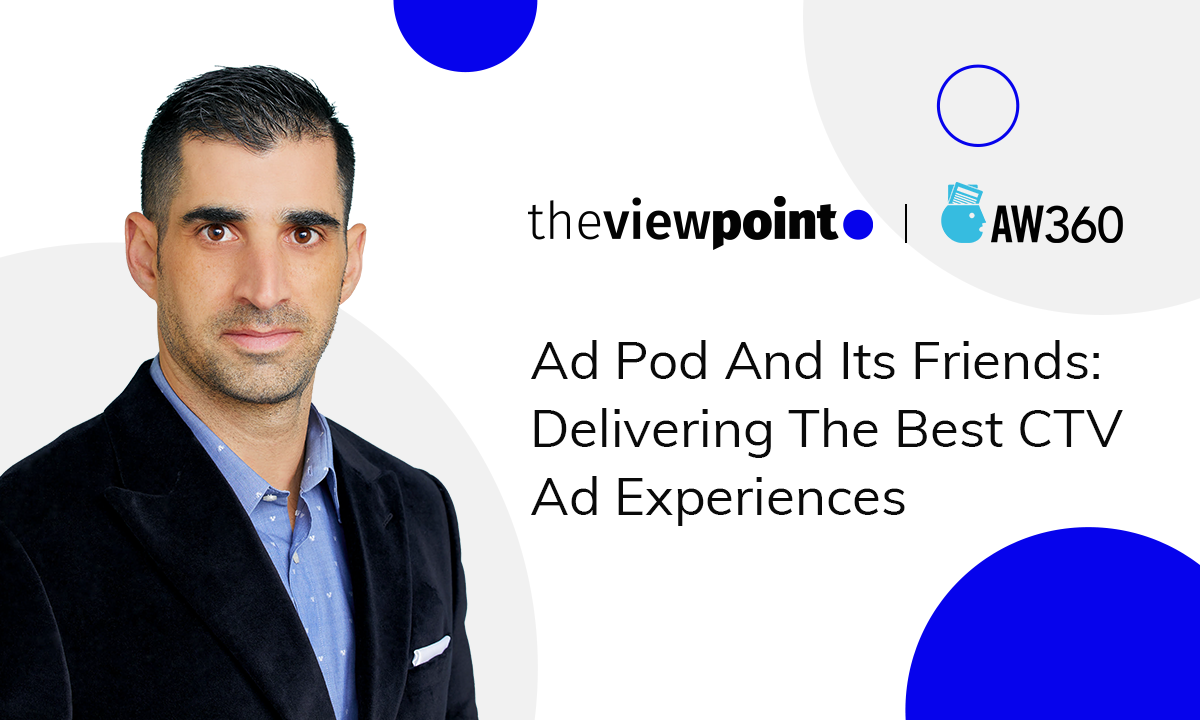
Transparency Quest: Is There any Escape?
Advertising has a long history. It has passed several milestones and undergone significant transformations before becoming what it is today. It originates from ancient times when messages were carved on different surfaces. Next, there was writing on papyrus, first black-and-white and then colored prints. After this, it shifted from typed words to photo, radio, and TV formats. With the advent of the Internet, online advertising has reached the apogee of this evolutionary ladder and that inevitably affected TV advertising. The TV industry keeps on developing and creating new business models for market players. In this article, we will talk about the latest challenges that the digital TV environment faces and what solutions have already been found.
‘Walled Gardens’ & SSPs: All That Glitters Is Not Gold
As a part of the ad tech industry, so-called ‘Walled Gardens’ acquired a reputation as solitary, monopolistic tech platforms. The notion refers to such data powerhouses as Google, Amazon, Facebook, and Apple (often abbreviated to ‘GAFA’). The reason for the ‘Walled Gardens’ alias is that they represent closed ecosystems where ad buying and selling operations are controlled by these blue-chip companies, and access to their data is limited.
At first sight, a ‘walled garden’ seems like a perfect environment for advertising business as it possesses jillions of pieces of first-party data and all the technical capabilities to run targeted campaigns for advertisers, and myriad demands for publishers. However, as they say: ‘all that glitters is not gold’. So the other side of this double-edged sword is that GAFA companies avail their oligopoly status and provide quite limited data on the pricing of the impressions they’re selling to brands. This leads to a significant lack of crucial metrics and transparent reporting which is a serious issue. Such a blurred policy tends to suggest that a publisher’s inventory might be sold to a brand at a much higher price with the margin simply going to a middleman’s pocket hereafter.
Another headache a publisher is most probably going to get is different metric approaches ‘Walled Gardens’ use. For instance, they can calculate their performance on the audience basis, while publishers estimate it in terms of ad units (type, size, placement spot, time, etc.) – one example is in banner video advertising. One more and not so obvious, though very important, disadvantage of such marketplaces, is their notorious customer support service unless you’re a really big client. In most cases, you can rely only on ‘cold’ situative guidelines which occasionally lead to a dead end.
Speaking of the traditional supply-side platform (SSP), the situation is quite similar. As a matter of fact, there is no such sell-side platform that will provide a publisher with a detailed report on charges and fees that it deducts within each auction. Video supply-side platform is the first link in the demand chain and it doesn’t make publishers aware of what’s happening behind the scenes of ad pricing – which can have a huge effect on things like direct response marketing. But whatever is going on, facts hit hard and it costs about 15-30% of publisher’s revenue.
On top of that, since Google has moved to the first-price auction model, bid shading is flourishing across supply-side platforms. Put simply, bid shading is a price-reduction tactic used to purchase an impression for minimal price. Some SSPs offer their bid shading algorithms to advertisers so they can get prime ad spots for lower rates. And after that, SSPs are charging media buyers a percentage of how much they save them on bids. It doesn’t look like advocating for the publishers’ interests. This state of play has inevitably led to the search of alternatives.
Refined Monetization
In an attempt to bring the ultimate value for CTV & OTT publishers, we at TheViewPoint have developed a platform that doesn’t include any middlemen between a publisher’s inventory and advertisers’ demand. Although our goal is to support publishers with sterling SSP capabilities and help them to swell their ad revenue, TheViewPoint is not an SSP operator, but a SaaS monetization platform for CTV/OTT publishers. Our advertising software for publishers is kind of a ‘technical bridge’ that connects publishers and advertisers directly with no mediators involved.
Unlike traditional SSPs, TheViewPoint provides clear and transparent supply chain management based on a fixed, flat monthly fee. Publishers can run their ad exchanges and bring preferable ad partners there, or to find new ones in our extensive network of verified advertisers, regardless of monetization model – AVOD, SVOD, or TVOD.
TheViewPoint platform embraces innovative ad formats that lure audiences with interactive features and increase engagement output. Publishers can offer topflight creatives to premium brands, and yield the highest bid rates accordingly.
Improving the Transparency Culture
To achieve state-of-the-art security and anti-fraud remedies, each party of the ad tech ecosystem should make its own contribution. Today, Interactive Advertising Bureau (IAB) actively promotes applying ads.txt, app-ads.txt, and sellers.json files that enable advertisers to avoid suspicious deals related to a counterfeit inventory in the long run. To make it work, publishers have to post these files on their root domains. As a member of IAB, TheViewPoint is also fostering the implementation of all solutions with the aim of shielding ad tech market players from fraudulent operations (mostly concerned with domain spoofing).
For the time being, a lot of publishers are neglecting this opportunity. Hence, advertisers and ad networks should stimulate them to resort to this type of protection too. For instance, Google doesn’t perform operations with resources that don’t use these preventive measures. Advertisers, in turn, should also sabotage interaction with all unauthorized counterparties. With such a synergistic approach, the ubiquitous application of the txt-series standards will be just a matter of time.
There is one more protocol that is expected to reinforce supply chain transparency. It’s the ads.cert standard which is a beta for OpenRTB 3.0 for now. With ads.cert, all the information about take rates is disclosed. In this way, buyers can clearly see how much they spent on media purchases, and what the ad tech fee is. This data lets marketers and demand-side platforms choose the best price for the desired audience, and consequently establish trusted business relationships with publishers. But this protocol can only be released if OpenRTB 2.5 is updated to v. 3.0. and most market players are only considering such a transition.
Takeaways
Many milestones have been reached over the years in the world of ad tech. Still, the evolutionary process continues, even for things such as understanding the difference between adtech and martech. The issue of supply chain transparency within traditional SSPs and ‘Walled Gardens’ is on the agenda. The opaque and unpredictable commissions that arise in ‘black boxes’ compromising trust between market players, and preventive measures for this challenge will take some time. Meanwhile, thriving CTV & OTT publishers are working on ways around these issues due to innovative monetization platforms that already offer flat tech fees and complete control over ad inventory.
Related
Programmatic TV Tax Day is Not Just April 15. It's Every Day
This blog examines the significant "AdTech tax" in Connected TV advertising, advocating for Tatari's direct integration with publishers to bypass hidden fees, resulting in substantial cost savings and enhanced transparency.
Read more
Ad Pod And its Friends: Delivering the Best CTV Ad Experiences
Aiming to stand out from the crowd and surpass consumers’ expectations, CTV advertisers have to be allied with publishers and very savvy at applying innovative advertising techniques, like frequency capping, competitive ad separation, and deduplication. Though still raising a lot of eyebrows, these tools have already become the next big thing in the advertising world. So, before diving deep into the details of ad pod management, let’s take a sneak peek behind the scenes of modern CTV play.
Read more
Everything You Need to Know About Real-Time Bidding
As programmatic advertising is gaining momentum, RTB or real-time bidding comes in. In fact, most platforms in ad tech today are RTB enabled. But what does that actually mean? What is an RTB platform and why is it so important for digital marketers? Let’s get the answers to these questions and more.
Read more


